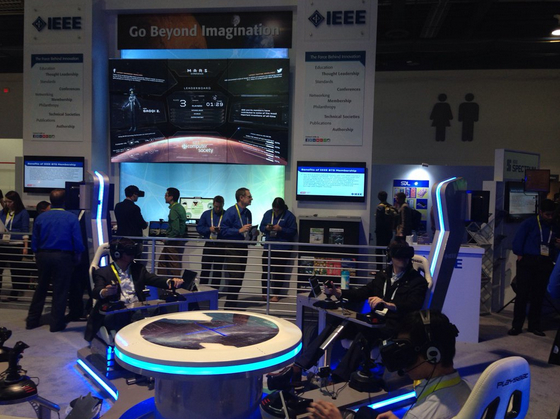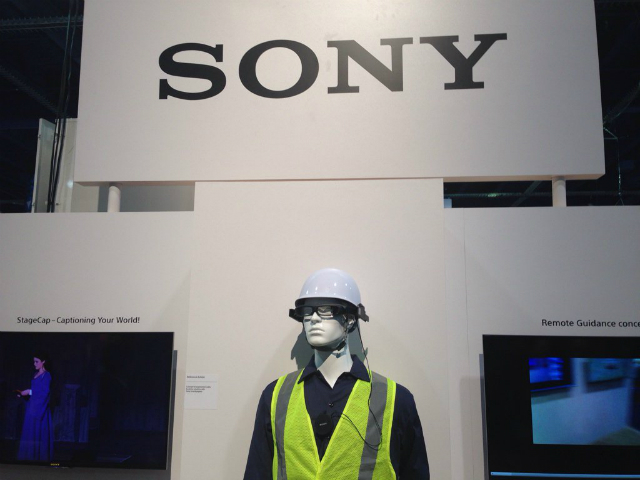There’s no better time in Vegas than January, attending the Consumer Electronics Show (CES). It’s commonly accepted that CES sets the tone for the New Year. And CES 2016 made quite an impression with as assortment of technologies, including virtual reality, augmented reality, the Internet of Things (IoT), the connected car, robotics, 3D printing, drones, and the smart home. Of course there’s more to it than just that, but my eyes fixated on this lineup because it’s what interests me the most. But, my eyes did wander a bit.
In a previous life, I often attended CES as a journalist. This was a totally different experience, considering I was there for a full week and not just a few days. To be honest, CES deserves a full week, at least. Nowadays, the show spills over from the Las Vegas Convention Center (LVCC) and into neighboring hotels. It seems the show gets bigger and bigger each year. Regarding CES and I, we hadn’t seen each other in a decade, but it welcomed me back with open arms.

The busy IEEE booth at CES 2016
The differences between then and now were ominous. Not surprising, there were things that hadn’t changed a bit. For instance, the big-brand booths were large and somewhat claustrophobic—if that’s possible. In years past, a show-goer could easily look around and see surrounding booths and gather a general location in the LVCC. Not so much anymore. After visiting the Samsung, Panasonic, and LG booths… each felt like being immersed in a 360-degree experience that wouldn’t let go. No more cutting through one booth to get to another booth. Nope. If you stepped foot in a big-brand booth, get ready for an in-your-face display of flashing lights and shiny objects in circumference.
What seemed familiar were the dueling big brands for the biggest, best TV. This was always a CES favorite for me. I couldn’t wait to see which brand could exceed the previous year’s enormous TV monstrosity. However, CES 2016 invited a different display competition: it was the combination of curvature and crispness. The curved 4K LED TV was all the rage in Vegas. And it was extraordinary, no doubt.
Another observation of significant difference was the role of the automaker at CES. A decade ago, if a car was parked on the show floor it was booming with ear-deafening bass and stereo strength. Today, companies like Ford, Audi, and many others had their vehicles on display, touting their Internet connectivity abilities and intelligence. The future has arrived – the car is a full-fledged member of the electronics family. While it shouldn’t be a surprise, the level of excitement that the automakers stirred was nothing short of remarkable.
So, what was the most exciting element of CES? Well, back in the ‘80s, I thought virtual reality (VR) had arrived and become what many thought it would be: the technology that defined all other technologies. But alas, that wasn’t the case. VR certainly did rise, but it fell hard…only to rise again in recent years. With companies like Oculus, HTC, Sony, Samsung, Microsoft, and Google, VR has become the most sought-after tech experience in the world. So who am I to judge? What’s old is new again.
Next to VR is augmented reality (AR). So far, what we’ve seen with AR is mostly associated with some cool mobile apps and Google Glass. While a surprisingly polarizing product, Glass introduced us to the world of 360-degree instant information. But the industry has evolved a bit, allowing AR and VR to be comfy bedfellows.

Sony’s SmartEyeglass garnered lots of attention at CES 2016
There’s no doubt, we learned a lot from Glass; nowadays, it’s a race to see which company can perfect the marriage between product and service (without invading privacy and security). However, CES 2016 made AR look necessary—as though certain jobs couldn’t live without its benefits. Sony had its SmartEyeglass on display as part of a field worker solution to display real-time information as a means to enhance on-the-job performance. Yes, I thought it was awesome, as well.
Today, it’s all about the “smart” products. It seemed every company at CES had a product and/or service that was called smart this or smart that. The term was extremely overused. In fact, if you thought the word smart was overused before, CES made it an outright cliché. But where I make exceptions in the “smart” world are in markets, rather than products and/or services. As an example, the smart home defines an entire realm of products that connect everything in the home. And a smart home can’t live without the IoT—another growing, evolving industry. Both the smart home and IoT were alive and well at CES 2016…in fact, they took up entire sections of the convention center. It seemed every big brand had a section devoted to the smart home and/or IoT.

A multitude of drones took flight across CES 2016
Even more exhilarating was the amount of drones flying around the LVCC and elsewhere. Although caged in a booth, each drone had its own set of unique benefits. I saw one concept hybrid model that used fuel to support two hours of flight time, which would be ideal for an electric utility to serve their line inspection requirements. There were drones that had spatial awareness and moved away from objects as they approached or if it flew too close to certain boundaries. No joke, there was even a drone that could carry a person.
A visit to CES could influence blog after blog after blog, but this is just an abstract of what I saw and experienced. Did you attend CES? What exciting new tech did you see and enjoy? Share in the comments below. See you in Vegas for the 2017 CES!

